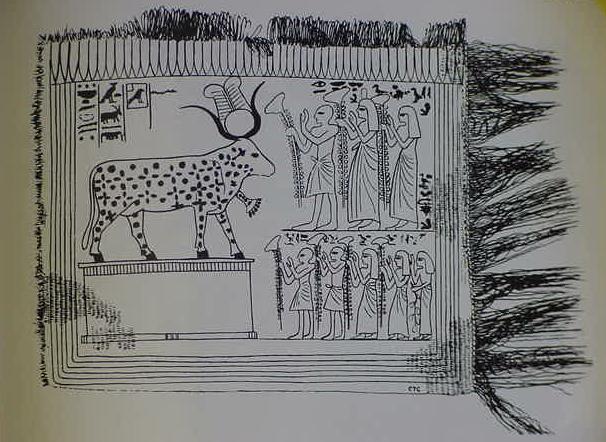Line drawing of a votive cloth found at the Hathor shrine at Deir el Bahri, Egypt. As Hathor was the patron goddess of women, and as textile-making was considered a woman's craft, votive textiles, in the form of tapestries, banners, shirts and cloths are frequently encountered at her shrines (sometimes with painted, sewn and inked designs). Professor Beno Rothenberg found votive textles at the Ramesside Hathor shrine at Har Timna in the southern Arabah. The crosses on Hathor's body may represent stars, as she was a cow-sky-goddess, the starry night was seen as stars on her belly when viewed from the earth. In the morning at dawn she gave birth to the Sun as a Golden Calf. A menant necklace made of beads was sacred to her and appears about her neck (cf. fig.11A. Geraldine Pinch. Votive Offerings to Hathor. Oxford. Griffith Institute Ashmolean Museum. 1993)
A votive cloth with an ink drawing of Hathor with a calf beneath her belly, an altar before her. She was honored as giving birth to the Sun at dawn as a Golden Calf (cf. Plate 26A. Geraldine Pinch. Votive Offerings to Hathor. Oxford. Griffith Institute Ashmolean Museum. 1993)
